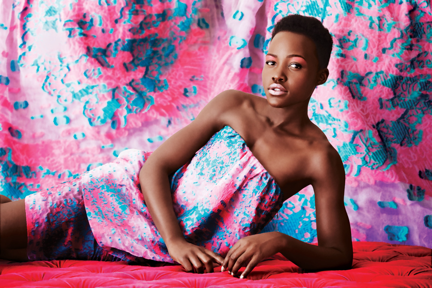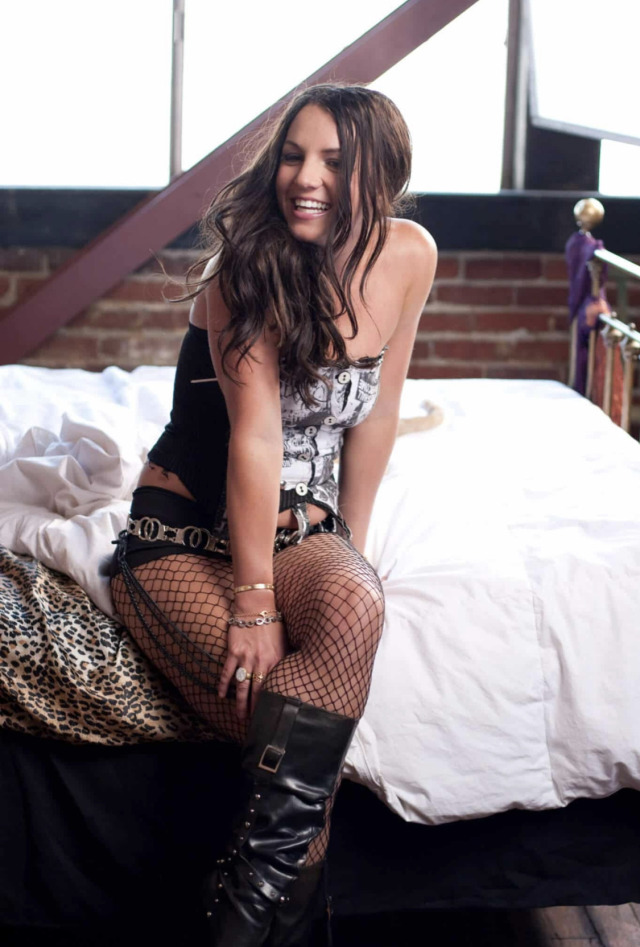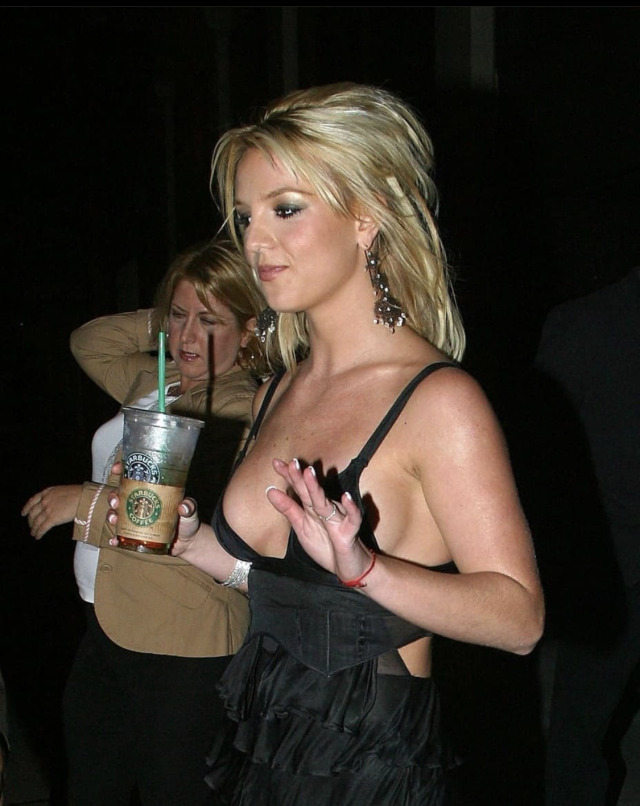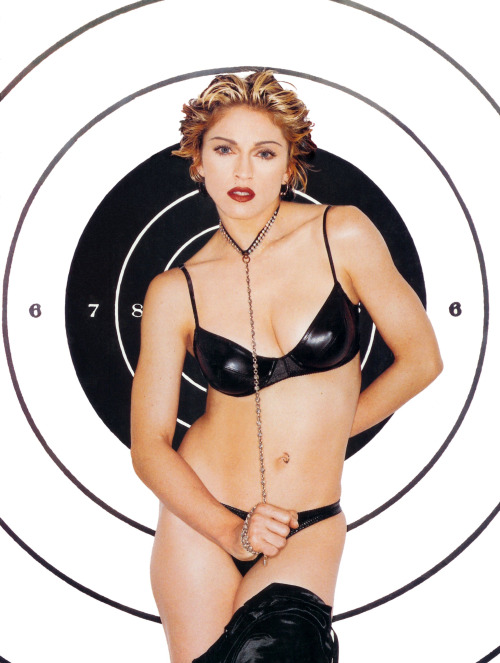#pop culture
by Hannah Giorgis

(Photo Credit: NY Magazine)
It’s no secret that I am a Lupita Nyong’o fan girl. She is gorgeous, graceful, and certifiably ***flawless.
The actress gained worldwide attention for her heart-wrenching portrayal of the enslaved Patsey in Steve McQueen’s much-praised 12 Years A Slave. Having been thrust into the Hollywood spotlight only months ago, Lupita is notably reserved in the public eye—but her powerful presence speaks volumes about the ever-expanding ways in which Black women are complicating archaic notions about our femininity.
Lupita’s Patsey is markedly different from both Mistress Epps, her master’s wife, and from Kerry Washington’s delicate Broomhilda in Django Unchained. Dark-skinned and long-suffering, Patsey is not afforded the benefit of Broomhilda’s damsel in distress rescue. It is, however, worth noting that both women were targets of sexual violence from the white men with power over them, neither of them immune to the Jezebel stereotype that deemed their black female bodies “unrapeable.”
In many ways, the logic we ascribed to black female bodies in the antebellum South still applies today. It has certainly changed to complement modernity, and yet myths that posit black women as simultaneously undesirableandhypersexual continue to pervade common narratives. We are either asexual, unfeminine mammyorbrazen whore—often forced into the latter category even as children.
Within these rigid confines, there has been little room to craft new models of Black femininity that do not get immediately recast into the old paradigms—expressions of androgyny signifying asexuality and hints of hyperfemininity becoming another visible sign of supposedly latent hypersexuality. Even progressive, beauty standard-challenging feminist blogs call pink-lipstick wearing, purple-haired black women “hard femme” based solely on our phenotypes.
And yet Lupita Nyong’o embraces hyperfemininity so boldly that audiences, critics, and magazine editors alike all recognize she is a force to be reckoned with. With bright colors, sleek silhouettes, and bold necklines, she is taking the fashion world by storm. And people are noticing.

(Photo Credit: US Weekly)
Lupita is a beacon of hope for every dark-skinned, natural-haired girl who grows up being told she looks like a boy, a challenge to the racist, cissexist claims that Black women’s short hair or musculature are inherently masculine. She is an inheritor of the modern legacy that First Lady Michelle Obama also occupies, an Afro-descendant fashion story woven together with palpable white envy.
Her adamantly delicate disposition flies directly in the face of both historic and contemporary falsehoods about Black women as inherently masculine, a quiet rebellion against the standards that pit white femininity as the unreachable standard against which all women must be measured. Her confidence is a powerful message that we need not reach toward the vanishing horizon of white femininity to be considered beautiful; Black women are ethereal on our own shores.
We have always been enough—and sometimes it’s nice to be reminded.
But what’s important isn’t just that Lupita is bursting onto the scene and expanding norms with visible markers of bold femininity. She may be one of few dark-skinned, short-haired women to occupy the national spotlight with feminine poise—but she is also the beneficiary of privileges that many other feminine-presenting dark-skinned women do not enjoy.
A graduate of Yale University School of Drama and daughter of middle-class Kenyan dignitaries, Lupita represents a “respectable” femininity that many low-income black women without her credentials cannot access. Though her demeanor does not make her wholly immune to racist assertions that she is uncouth or undeserving, she is largely shielded from this particular kind of classist misogynoir.
That does not mean her influence is wholly inaccessible to all feminine-presenting Black women—or that the effects of her trailblazing femininity hold no meaning for low-income Black women. Rather, it is simply important to consider many aspects of how femininity are constructed and not pat ourselves on the back for addressing colorism in our analysis.
What does it mean that low-income Black women’s bodies are the first to be ridiculed, to be surveilled, to be sterilized? Meme after meme has come to popularity at the expense of Black women who stand outside the margins of acceptable femininity: who do not speak “standard” English, who do not work in “professional” environments, who do not have access to academia and certainly not the Academy.
Consider Rachel Jeantel, the key prosecutorial witness in the Trayvon Martin case. Both the hatred she received during the trial and the makeover she received after it suggested that her femininity as it stood was too much body and too little weave, too much immigrant and too little English.
Lupita’s dark skin and short hair make her an anomaly in Hollywood’s feminine sphere, but not in the realm of Black femininity. If we are to celebrate the complex layers of Black femininity, we must not simply praise those exceptions whose femininity is highlighted in magazines for the world to see. We must re-envision beauty outside the context of white supremacist standards altogether.
What would it mean for young Black girls to grow up in a world where they didn’t need to speak the Queen’s English or afford designer clothes to be considered ladylike? What if we met young Black girls’ trends with adoration instead of labeling their aesthetic exploration ratchet (until it’s appropriated by more palatable white bodies)? What if we centered Black trans girls and affirmed their femininity from the moment they first express it? What if Black femininity could also validate Black bodies whose femininity is more complicated than our binaries recognize?
Black femininity has always disregarded others’ boundaries—imagine what’s possible if we also dreamt beyond our own.
Yah! done with this years The Great British Bake Off’s technical challenges in cross stitch! I think my favorite designs of this year are the matcha cake and eclairs. i’m proud of the cornucopia but the trouble it put me through makes it definitely not my favorite. well all i can say i hope next year has A/C!
Post link
KEM - Stuck on You
KEM – Stuck on You
Three-time GRAMMY Award-nominated multiplatinum 21st century R&B icon KEM returns to the #1 spot on R&B radio this week! His critically acclaimed new single, “Stuck On You” captures #1 at R&B radio, marking his eighth career #1 record. Affirming his place at the top once more, this milestone extends his incredible legacy, which remains one of the most storied and influential in modern soul and…

Gavin DeGraw - Face the River
Gavin DeGraw – Face the River
Multi-platinum recording artist Gavin DeGraw has released his very personal new single “Face The River,” which is the title track from his forthcoming album out May 20 via RCA Records. On the track, written by DeGraw, his distinct intonation quivers above sparse piano before the organ-laden beat simmers. This slow-burn catches fire on a heavenly hook as he croons, “Try to face the river. I cannot…

Guapo × OTB Fastlane
Guapo × OTB Fastlane
Rising Houston-based rapper Guapo has mastered a new flow full of punchlines, quotables and Instagram captions that is just simply above par. He recently shared his new single “SRT” feat. OTB Fastlane. Listen to “SRT,” produced by 100Keyz, HERE and watch the video, directed by SpxrkStudios, HERE.
About Guapo
A Houston act so early in their career has never had such prolific strides quite like…

Bob Moses - Hanging On Live
Bob Moses – Hanging On Live
Bob Moses shared a live performance video of their track “Hanging On.” Filmed in Hollywood, “Hanging On” is the fourth single released from the GRAMMY Award-winning duo’s new album The Silence in Between, out now via Astralwerks/Domino Recordings Co. Watch HERE.
“Hanging On” perfectly reflects the album’s duality of darkness and light, abounding in luminous melodies and effervescent rhythms even…

Lexus Racing: Grand Prix Long Beach
Lexus Racing: Grand Prix Long Beach
By Yash Thadani and Krish Narsinghani
It was a fast and epic weekend for race fans as the NTT IndyCar Series returns. This prestigious race took place in the streets of Long Beach, specifically held at the Long Beach Convention Center.
Regardless if you’re a racing fanatic, this event was one to remember. Entering the convention center guests were directed towards a large room filled with…

a quiz
Who is Lil Nas X?
a) his generation’s Michael Jackson
b) his generation’s Prince
c) his generation’s Beyonce
d) fuck this quiz’s assumptions








the history of the gimmie more music video
the gimmie more music video was filmed over 2 days in july 2007 at a warehouse in downtown los angeles california with additional scenes later filmed on august 7, 2007 at the same location.
according to OK magazine, britney allegedly spent $30,000 of her own money on the music video, with extras being asked to volunteer their time for free so they could stay on budget.
according to people magazine, the production was all britney spears’s concept and vision.
the rumored original video concept was to start with britney attending a funeral, she sees a man in the crowd. she then starts to leave the funeral, as he follows. when britney leaves the funeral she drives to a deserted door. she is seen walking on the sidewalk. (the scene paparazzi caught on video) the deserted door opens to a dark club. britney walks through a crowded hallway, britney is then seen dancing on a stripper pole, (this scene is in the released version) the funeral britney has now changed into a darker outift and continues walking down the hallway, in the distance the another britney dressed in red and white is seen dancing on stage with dancers. The man from the funeral thinks he found britney and pushes her up against the wall. (“even when we’re up against the wall”) the girl is not britney, and britney is lost in the club crowd. during the bridge, scenes cut between stripper britney and the dancing britney. the dancing britney is kidnapped with something put over her face and is taken away. this britney is now in a dark and creepy hotel-like room. she is tied to a chair in the middle of the room. a girl who is assumed to be one of the britneys is seen violently beating her up. the viewer is led on to believe that britney has died. the video then cuts back to the funeral only for us to realize no one is in the coffin. the man traces his steps back to realize that none of the britneys he saw in the club were the real britney. while the man is confused, the camera zooms out of britneys eye as she winks and throws her funeral hat onto the bed in the hotel room.
leaked footage includes: cameramen filming britney walking down the sidewalk in the funeral outfit, britney talking with someone driving what looks to be a hearse, and a photo of an open casket for the original music video


no information has been released why the original video concept was changed in the released video.
britneys label, jive records, may have been trying to regain britneys old image by releasing the stripper video instead of the original video.
the original version for gimmie more was also meant to feature a strong elvis presley influence, which would explain britney’s short rendition of presley’s “trouble” opening her performance at the 2007 vmas, the month before the video release. britney also hired slim k, a dancer and noted elvis impersonator, to appear in the music video, and matching drawings of elvis and britney were featured on the wall. following his removal from this video slim k stated on myspace, “britney took a direction im not part of.. and quite frankly got NO idea where shes heading.. not my cup of tea though… the video is disappointing in my opinion..”
according to makeup artist Mikal Sky: “she sabotaged the director by refusing to perform and follow the script. so, what we got was her dancing on a stripper pole with her friends.”
a few months after the release of the music video, an alternate version leaked, featuring the same pole dancing scenes, but britney was seen dancing without a top on.
anotheralternate version was also leaked
creds to:
pophatesflops.com
yourmothermusic on youtube





14, 2009
2010 .





15, 2003
“ ” .






free britney. this situation completely breaks me to see. please watch the documentary “framing britney spears” on hulu or youtube, even if you arent a britney fan or dont listen to her music, it is still interesting and informative to watch.
britney never deserved this. this has gone on for way too long.
in addition, please share this post. we need to continue spreading the word abt britney’s conservatorship so she can soon get the justice she has rightly deserved for a very long time.




()
britney spears “in the zone” photo shoot.










